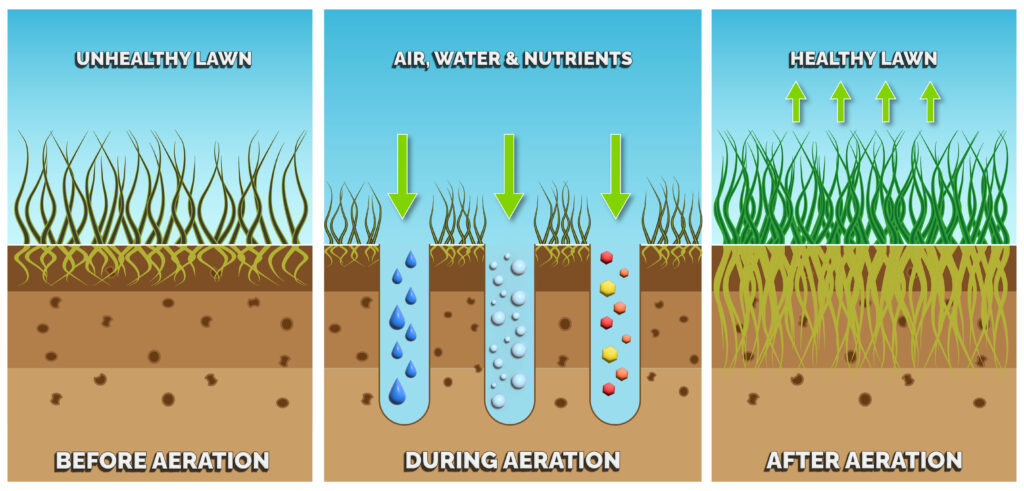Warmer Spring Weather Deserves a Drink
Overcome thatch by one very low mowing of couch in spring or early summer. Raise the mowing height to 50mm for tall fescue lawns (Arid, Droughtbreaker, etc). Tall fescue turf grasses may be showing signs of water stress if the weather has been warm. Tall fescues are winter-active grasses that will continue to grow through summer if they have adequate moisture. Lack of water at this time of the year will set the grass back so that it will not be able to withstand the heat of summer..
Watering: Remember that a good soaking of water every few days is more useful than frequent light sprinkling. Avoid watering the foliage late in the day; leaves remain wet for hours during the night, increasing the possibility of germination of fungal spores.
Dry patches in turf are often caused by water repellence. The grains in sandy loams sometimes become water repellent by being coated with organic residues from some plant materials. Decomposition of the thatch produced by turf growth can produce hydrophobic materials that accumulate in the thatch and upper part of the root zone.
The best way of overcoming water repellence and dry patch is by the use of agricultural wetting agents. It has been found that three light applications, spread through the dry season, give better results than one large application early in the season.
Black beetle can be a significant problem each summer. Lawns with a history of damage are more likely to be re-infested year after year. Bird activity on a lawn provides a really useful indication that beetle may be present. Magpies plunge their beak deeply into the soil to reach the beetle larvae. Blackbirds and starlings use their feet to scratch away the turf and forage for grubs. If you suspect a ‘hot spot’ grab a handful of turf and pull. If the sod pulls loose from the underlying soil with little effort it is likely the grubs have eaten the roots.
Weed control: September to November is the best time to treat lawns with selective herbicides, when the leaves are young and growing fast, and the weeds have not yet flowered. Selective herbicides contain plant growth depressants which are taken up by the leaves, not the roots. They upset the growth pattern, causing the plant to die.
A weed with minute lavender-blue flowers growing in lawns at this time of the year is probably creeping speedwell, Veronica persica. It is another of those annual weeds that forms a dense mat that crowds out the desirable turfgrasses at that critical time when new growth is emerging after winter dormancy.
Turf renovation practices such as coring or scarifying will place heavy demands on the energy demands of turf. It is prudent to delay these operations until new growth will use the current products of photosynthesis rather than stored food reserves. Renovation should only be done when the grass is actively growing. For couchgrass and kikuyu emerging from winter dormancy, the initial burst of green leaf growth is produced from food reserves stored in late autumn. As the leaf area of each single plant grows, then sugars and starches manufactured by photosynthesis gradually become sufficient to support new season’s growth. This is then the time to renovate, usually around October.
Various fungal diseases will become evident as the days become warmer and humidity is high. Powdery mildew is a common fungal disease that attacks many plant species. It appears as though a white powder has been sprinkled on the leaves and spreads rapidly if left untreated. Treatment is often improved by using a different fungicide. Chat to us about getting your lawn in AAA condition.








